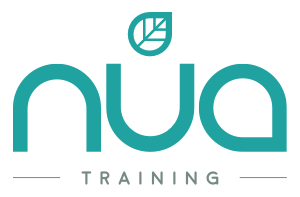
Sometimes you can get too much of a good thing…
We are now awash with data, but when organisations realise the full value and potential of their data, it means everyone in the business is empowered to make better decisions with data, every day. The challenge is identifying which data is going to allow you to make that better decision.
This is why presentation skills are now so important in business, particularly where data is concerned. One of the most highly valued soft skills that make data analysts shine are communication and presentation skills.
A data analyst’s work digging through raw data is wasted if they lack the communication and presentation skills to share their findings with the rest of the team, in a way that’s easy to understand, and not overload them with information.
At Nua, we work with Data teams to help them refine their presentation techniques, and the results in just two half days are quite transformational.
My 5 Tips To Present Data with Impact
Here are my five of our top tips to help you bring your data presentations to life and get your audience engaged and acting on your insights.
#1 – The 90% forgetting rule
The reality is we forget 90% of what we’re told within a week of hearing it*. Our attention spans are also reducing as we adjust to being continually bombarded by multiple sources of information, by developing information snacking habits to cope*. With data, our short-term memory can hold a set of about seven digits at any given time, but unless you can commit that information to your long-term memory, you’ll forget it.
Using techniques, you can develop this process to extend your memory further, but the audience for your next presentation isn’t likely to contain the future Derren Brown, so those hundreds of data points you want to include are largely going to be forgotten. Your challenge is to make sure the key data points stand out and are remembered by your audience. A great tip is to start with the end and write a two to three sentence summary of your presentation conclusion and recommendation down before you start thinking about the slide content. This is effectively your “elevator pitch” which will help you to focus your presentation message, and the data that supports this.
#2 – 3 is the magic number!
Because it is hard to remember lots of information, we as presenters have to work harder to get the audience to remember the key take outs. One way of doing this is by structuring our content into logical sections.
Three is the smallest number with the most complexity and is the reason why you hear so many consultants, politicians and senior businesspeople providing three points to answer a question or make their case. Many just do it out of habit and haven’t even thought of the third point when they start the first. Look around and you’ll see the use of three everywhere… ‘Stay Home, Protect the NHS, Save Lives’ being a prime example.
Therefore, try and structure your presentation into three logical sections if you can. Studies show we really struggle to remember any more than that.
#3 – Start chunking
Chunking refers to an approach for making more efficient use of short-term memory by grouping information. Chunking breaks up long strings of information into units or chunks. The resulting chunks are easier to commit to memory than a longer uninterrupted string of information.
Your goal, therefore, is to present information in such a way that people can easily “chunk”, to allow greater retention through short-term memory. For example, a table of data means the numbers themselves can’t possibly all be retained, but a chart that shows our conversion rate trending down may be retained as one chunk of information -“trending down.” And that is the important take-away for the audience.
#4 – Move from being a Data Explorer, to a Data Inspirer
This is where you need to move from acting as a head down contributor; A Data Explorer, to creating an answer that will inspire change in the business to happen; A Data Inspirer.
Data is now driving successful businesses; therefore the business wants you to create a point of view from your analysis and conclusions, not simply communicate data. Think of your TV. If you’ve just developed a new function in your Sony Bravia, you don’t want to explain all the technical details. You show and explain why the new pictures are so much clearer, and why watching something like the Olympics will be so much more impactful on the new television.
#5 – Bring the data to life
37 and 41 are not very interesting numbers. But if you’re talking about body temperature, 41oC is a very significant number, as you have a really high fever, will feel terrible, and may be on the way to having to go to hospital.
By explaining the background to the important data, or its impact helps to bring a number to life. The audience listens to your story, then begins to visualise what you’re talking about. That very process of creating their own mental images, starts to move the information from the short-term, to the long-term memory.
In fact, you are subconsciously teaching your audience memory retention techniques, meaning they are likely to remember a good bit more than just 10% of your information.
Those are five tips for you on how to present data with impact. If you found this article useful and would like to know more about how to get your presentations driving action and change with your audience, check out our course Presenting with Impact for Data Professionals or contact us at tony@nuatraining.co.uk
Tony Lamb is a Director of Nua Training.
*Sources
- Ebbinghaus forgetting curve
- DTU; Accelerating dynamics of collective attention 2019
Photo by Franki Chamaki on Unsplash
